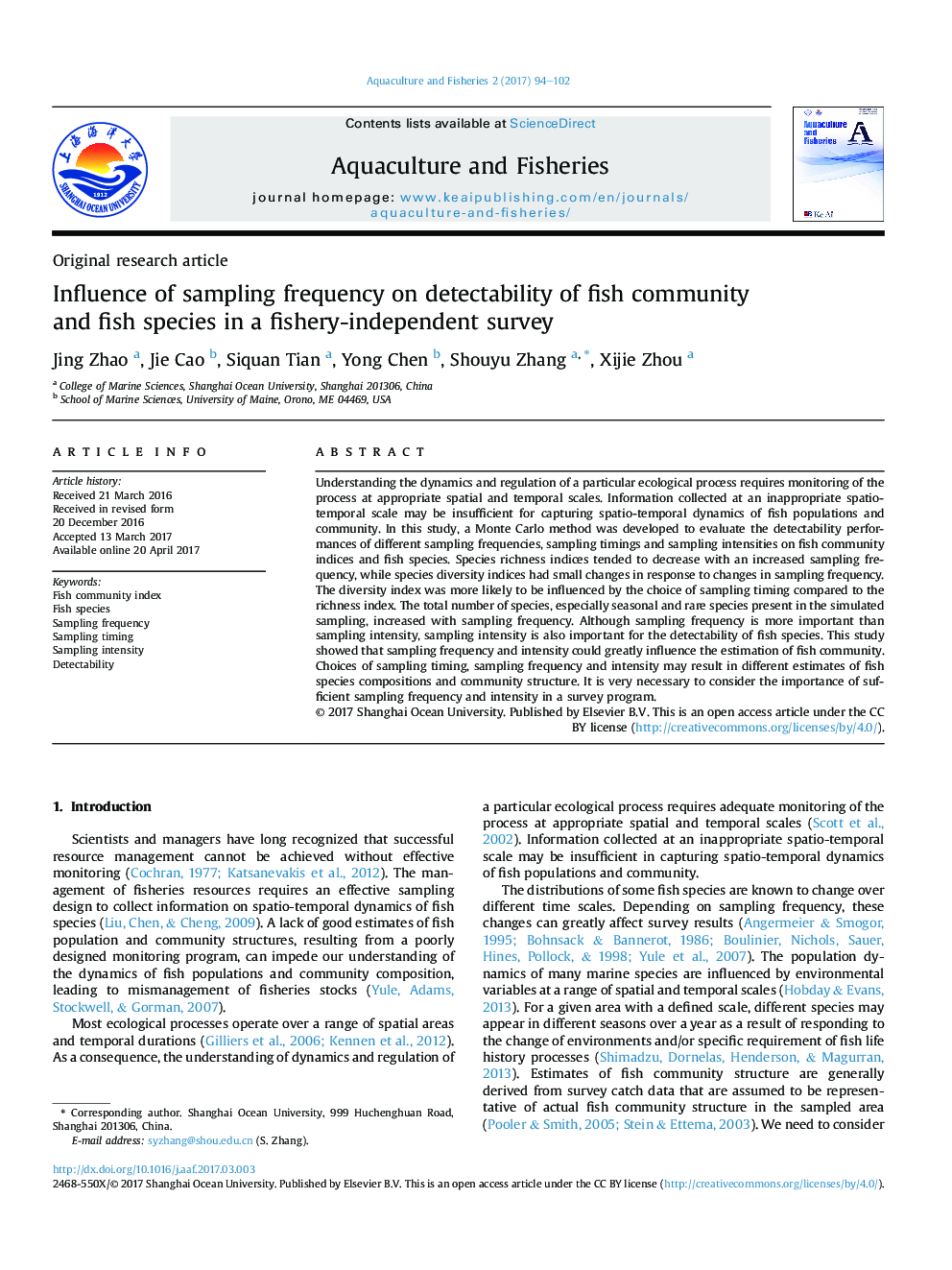| Article ID | Journal | Published Year | Pages | File Type |
|---|---|---|---|---|
| 8920023 | Aquaculture and Fisheries | 2017 | 9 Pages |
Abstract
Understanding the dynamics and regulation of a particular ecological process requires monitoring of the process at appropriate spatial and temporal scales. Information collected at an inappropriate spatio-temporal scale may be insufficient for capturing spatio-temporal dynamics of fish populations and community. In this study, a Monte Carlo method was developed to evaluate the detectability performances of different sampling frequencies, sampling timings and sampling intensities on fish community indices and fish species. Species richness indices tended to decrease with an increased sampling frequency, while species diversity indices had small changes in response to changes in sampling frequency. The diversity index was more likely to be influenced by the choice of sampling timing compared to the richness index. The total number of species, especially seasonal and rare species present in the simulated sampling, increased with sampling frequency. Although sampling frequency is more important than sampling intensity, sampling intensity is also important for the detectability of fish species. This study showed that sampling frequency and intensity could greatly influence the estimation of fish community. Choices of sampling timing, sampling frequency and intensity may result in different estimates of fish species compositions and community structure. It is very necessary to consider the importance of sufficient sampling frequency and intensity in a survey program.
Related Topics
Life Sciences
Agricultural and Biological Sciences
Aquatic Science
Authors
Jing Zhao, Jie Cao, Siquan Tian, Yong Chen, Shouyu Zhang, Xijie Zhou,
